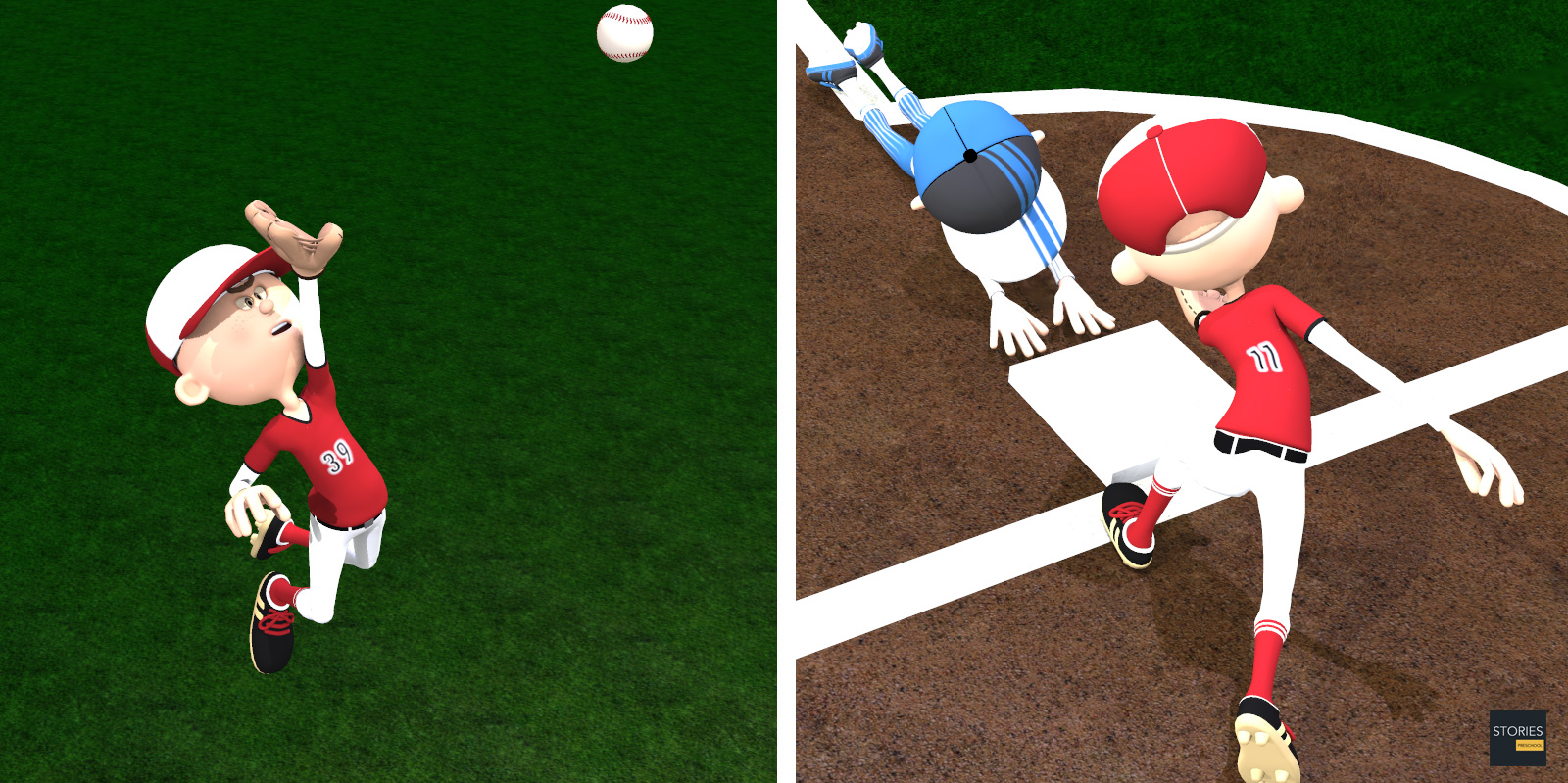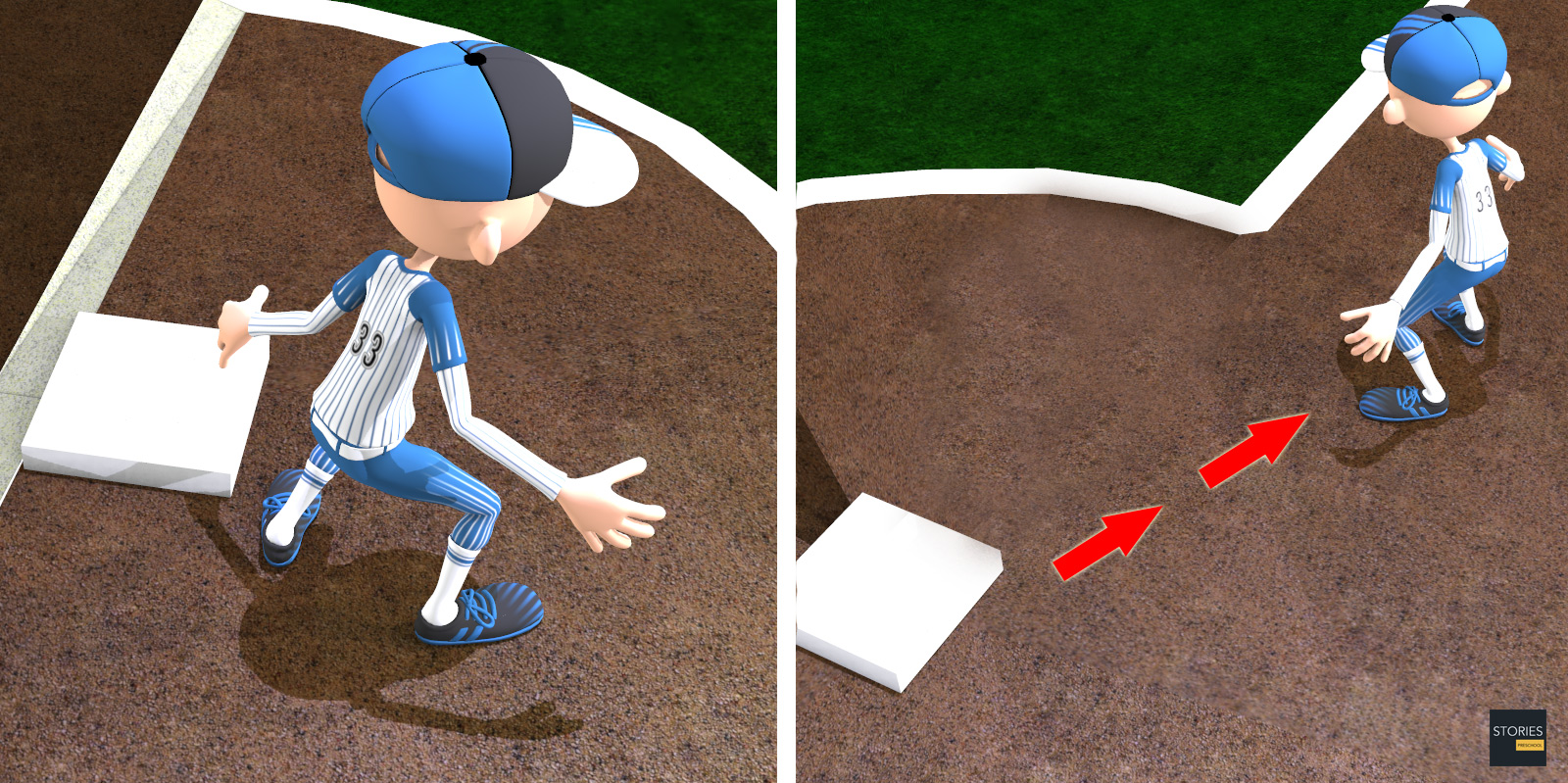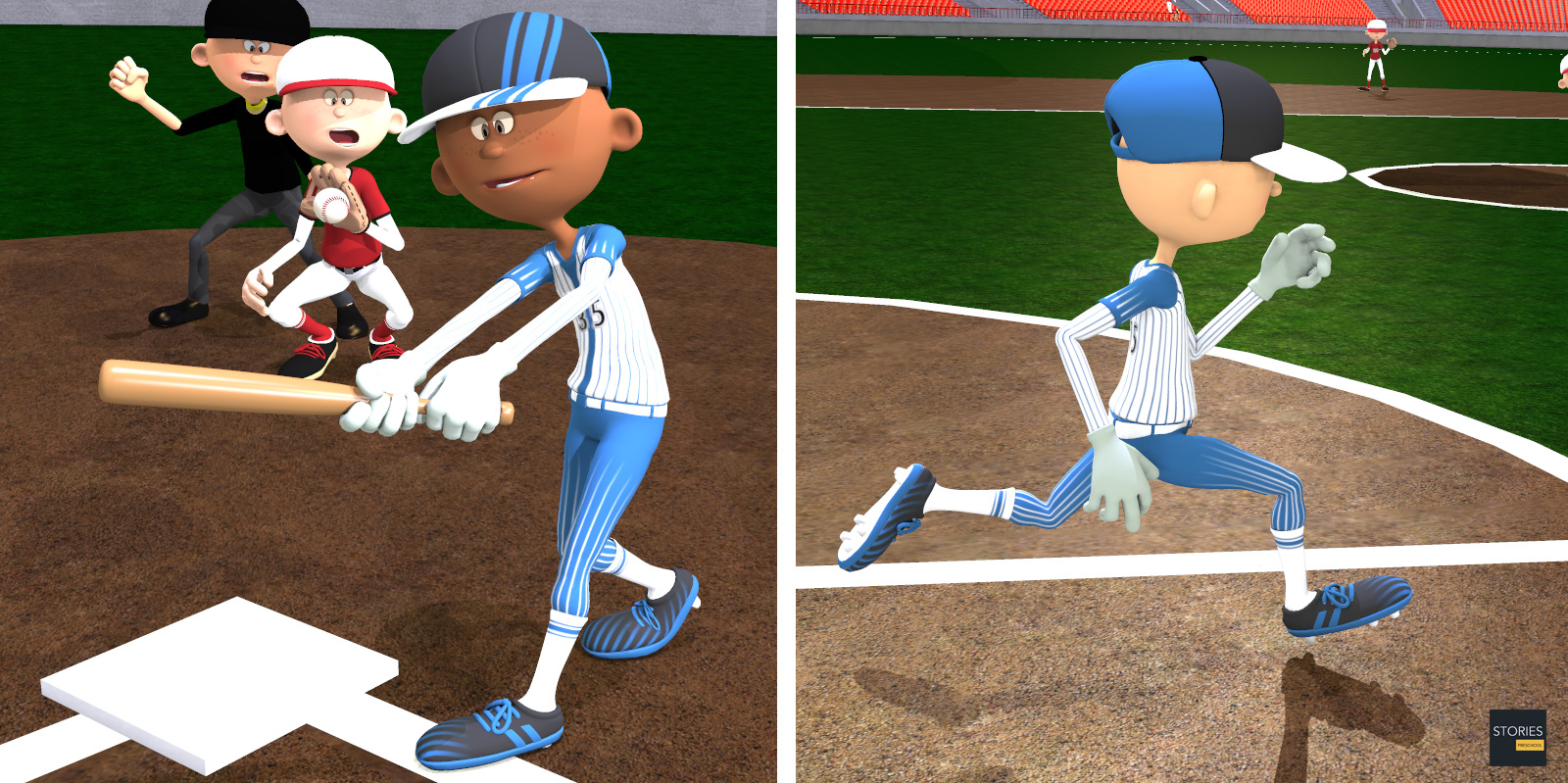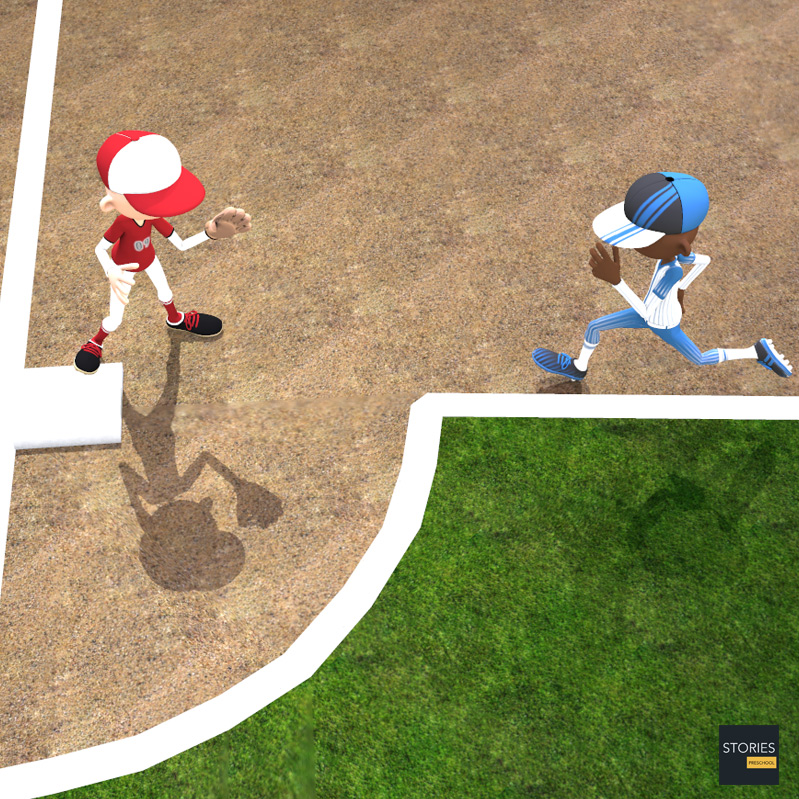Baseball

Baseball Stolen Base
In baseball, a stolen base occurs when a runner advances to a base to which he is not entitled and the official scorer rules that the advance should be credited to the action of the runner. The umpires determine whether the runner is safe or out at the next base, but the official scorer rules on the question of credit or blame for the advance under Rule 10.

A stolen base most often occurs when a baserunner advances to the next base while the pitcher is pitching the ball to home plate.
Successful base stealers are not only fast but have good base running instincts and timing.
Base-Stealing Technique
Baseball's Rule 8 (The Pitcher) specifies the pitching procedure in detail. For example, in the Set Position, the pitcher must "com[e] to a complete stop"; thereafter, "any natural motion associated with his delivery of the ball to the batter commits him to the pitch without alteration or interruption." A runner intending to "steal on the pitcher" breaks for the next base the moment the pitcher commits to pitch to home plate. The pitcher cannot abort the pitch and try to put the runner out; this is a balk under Rule 8.
If the runner breaks too soon (before the pitcher is obliged to complete a pitch), the pitcher may throw to a base rather than pitch, and the runner is usually picked off by being tagged out between the bases. Past this moment, any delay in the runner's break makes it more likely that the catcher, after receiving the pitch, will be able to throw the runner out at the destination base.
Before the pitch, the runner takes a lead-off, walking several steps away from the base as a head start toward the next base. Even a runner who does not intend to steal takes a secondary lead of a few more steps, once the pitcher has legally committed to complete the pitch.

The pitcher may, without limit, throw the ball to the runner's base. The runner must return to that base or risk being tagged out; but the underlying strategy is thereby to dissuade the runner from too big a lead-off; that is, to hold the runner on his original base.
The more adept base stealers are proficient at reading the pickoff, meaning that they can detect certain tells (tell-tale signs) in a pitcher's pre-pitch movements or mannerisms that indicate the pickoff attempt is or is not imminent. For example, one experienced base stealer noted that careless pitchers dig the toes on their back foot into the ground when they are about to pitch in order to get a better push off, but when they intend to turn and throw a pickoff, they do not.
If a batted ball is caught on the fly, the runner must return to his original base. In this case, a runner trying to steal is more likely to be caught off his original base, resulting in a double play. This is a minor risk of a steal attempt. It is offset by the fact that a ground ball double play is less likely.
Plays involving Base Running
In the hit-and-run play, coaches coordinate the actions of runner and batter. The runner tries to steal and the batter swings at almost any pitch, if only to distract the catcher. If the batter makes contact, the runner has a greater chance of reaching the next base; if the batter gets a base hit, the runner may be able to take an extra base. If the batter fails to hit the ball, the hit-and-run becomes a pure steal attempt.

In the delayed steal, the runner does not take advantage of the pitcher's duty to complete a pitch, but relies on surprise and takes advantage of any complacency by the fielders. The runner gives the impression he is not trying to steal, and does not break for the next base until the ball crosses the plate. It is rare for Major League defenses to be fooled, but the play is used effectively at the college level.
Second base is the base most often stolen, because once a runner is on second base he is considered to be in scoring position, meaning that he is expected to be able to run home and score on most routine singles hit into the outfield. Second base is also the easiest to steal, as it is farthest from home plate and thus a longer throw from the catcher is required to prevent it. Third base is a shorter throw for the catcher, but the runner is able to take a longer lead off second base. A steal of home plate is the riskiest, as the catcher only needs to tag out the runner after receiving the ball from the pitcher. It is difficult for the runner to cover the distance between the bases before the ball arrives home.
In a variation on the steal of home, the batter is signaled to simultaneously execute a sacrifice bunt, which results in the squeeze play. The suicide squeeze is a squeeze in which the runner on third begins to steal home without seeing the outcome of the bunt; it is so named because if the batter fails to bunt, the runner will surely be out. In contrast, when the runner on third does not commit until seeing that the ball is bunted advantageously, it is called a safety squeeze.
In more recent years, most steals of home involve a delayed double steal, in which a runner on first attempts to steal second, while the runner on third breaks for home as soon as the catcher throws to second base. If it is important to prevent the run from scoring, the catcher may hold on to the ball (conceding the steal of second) or may throw to the pitcher; this may deceive the runner at third and the pitcher may throw back to the catcher for the out.
Statistics
In baseball statistics, stolen bases are denoted by SB. Attempts to steal that result in the baserunner being out are caught stealing (CS). The sum of these statistics is steal attempts.
The rule on stolen bases states that:
- Advances that are credited to some other play are not steal attempts. For example, on a wild pitch or a passed ball, the official scorer must notice whether the runner broke for the next base before the pitch got away.
- As usual, statistics in the case of a defensive error are based on error-free play. If a runner would have been out, but for the error, it is scored as "caught stealing, safe on the error." A catcher does not commit an error by throwing poorly to the destination base, but if any runner takes an extra base on the bad throw, it is "stolen base plus error."
- There is no steal attempt on a dead ball, whether the runner is sent back to the original base (as on a foul ball) or is awarded the next base (as on a hit batsman). On a base award when the ball is live (such as a walk), the runner could make a steal attempt beyond the base awarded.
- Cases where the defense makes no attempt to put the baserunner out (for example, if the catcher doesn't even look his way) are scored as defensive indifference (also called fielder's indifference). This is generally only scored late in the game and when the team at bat is trailing by more than one run.

Relative skill at stealing bases can be judged either by evaluating a player's total number of steals or the success rate (stolen bases as a percentage of steal attempts). Noted statistician Bill James has argued that unless a player can steal a high percentage of the time, then the stolen base may be detrimental to a team. A success rate of 67 to 70% or better is necessary to make stealing bases worthwhile.
SPORTS

RESOURCES
This article uses material from the Wikipedia articles "Baseball" and "Stolen base", which is released under the Creative Commons Attribution-Share-Alike License 3.0.
© Stories Preschool. All Rights Reserved.












